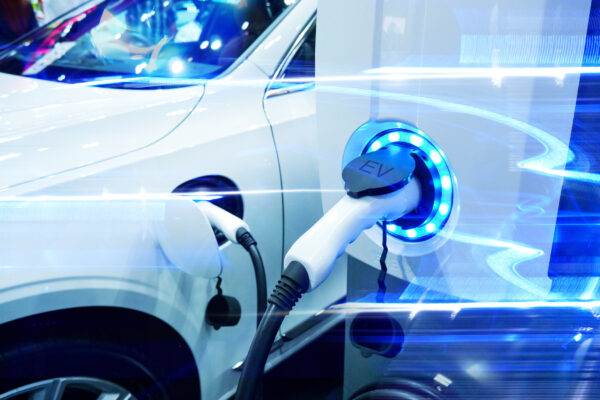The overall EV market is quickly gaining momentum as governments worldwide push for a future with net-zero emissions and automakers rev up production to meet growing demand. And demand is indeed growing. In the first quarter of 2023, the total EV market share increased to 7.2% of total sales, representing a 50% jump year over year. When compared to the ten years it took for hybrid vehicles to accomplish 10% penetration, it’s a new record and a trend that promises to continue, transforming the automotive industry along the way.
Much of this record-breaking adoption is a result of the unnatural demand caused by regulations. Seventeen states so far have adopted the California Emission Standards, causing OEMs to ship more EVs to the states with strict emission requirements. While these regulations and increased supply have improved adoption in some states, this approach also means that consumers in other states have less inventory to choose from and longer wait times.
Experts are continuously examining the factors that are driving or slowing adoption, and supply and demand imbalances are certainly one of them.
If OEMs want consumers to adopt electric vehicles because they want to, and not just because they are forced to, they’ll also need to address barriers to sales including supply chain complexities, charging infrastructure, price, and even the lack of EV education for the average driver.
Offering a Model for Every Type of Driver
One of the complaints of consumers is the lack of inventory and diversity in selection, but that issue is quickly waning. In 2023, buyers can find 33 new EV models , including heavy-duty trucks like the GMC Hummer and the F-150 Lightning, luxury vehicles like the Audi e-tron GT, the Mercedes EQS SUV, and more affordable options like the Nissan Leaf and the Chevy Bolt. Automakers are quickly engineering and manufacturing electric models for every type of consumer, and even attempting to break into the “commuter car” market with more affordable options.
Fifty more new models are estimated to be on the horizon, promising additional inventory and variety — and testing Tesla’s dominance. While Tesla has maintained a 60-70% market share, analysts predict that will drop to 18% by 2026. The trick for dealers and manufacturers will be to leverage federal tax incentives and compete with Tesla’s price breaks and customer service to attract new EV owners.
Easing Anxiety Around Batteries and Charging
However, offering the inventory that customers demand is not the last leg of the race. Many difficulties remain, especially when tackling charging and range anxiety that plagues so many consumers. At the root of this anxiety is the challenge of battery manufacturing, which currently remains predominantly in China at around 80-85%. Allowing one region to dominate the manufacturing of batteries creates several supply chain issues such as expensive tariffs, regulations, costs, and a high risk of disruption. In response, many OEMs are now moving their battery manufacturing to domestic plants, and in turn, they are creating jobs, lowering costs, and improving supply chain visibility.
Battery manufacturers are still battling the issue of weight and range – the further an electric vehicle can drive, the heavier its battery and the more expensive the model. While extremely heavy vehicles pose risks such as damage to infrastructure and catastrophic traffic accidents, consumers are hesitant to purchase a vehicle that needs to be charged constantly in an area where public charging stations are difficult to find.
For U.S. charging stations to keep up with the EV targets set by the Biden Administration, we would need to install 400 chargers each day for the next 10 years. The good news is that OEMs, charging companies, retailers, utility companies, and other stakeholders are coming together to develop a convenient, reliable charging map for EV owners. They are plotting locations for chargers, partnering with dealerships, testing different charging options, and applying lessons from EV pioneers like Tesla and Rivian.
Despite Improvements, Consumer Education is the Biggest Hurdle
EV technology has made great strides, going from a fringe luxury product to the new standard in automotive technology. Electric vehicles now include sports cars, freight trucks, bikes, and many other products designed to make travel easier, quicker, and more sustainable. At the same time, the majority of consumers still hesitate to switch from their gas-powered vehicles, and it’s becoming clear that the biggest factors are misconceptions about electric vehicles combined with a lack of attempts to educate consumers about the products.
Behind elaborate marketing campaigns and intense pressure from governments is a truly advanced product that amazes everyone who gives it a chance. Our research found that most drivers have never sat in an electric vehicle, let alone driven one – but the consumers who do drive one are instantly and permanently converted.
Many of our interviewees urged dealerships to focus less on sales and prioritize a customer-friendly educational experience in which product experts guided them through a showroom and answered all their concerns.
In that case, the issue is not the product. If traditional automakers and dealers want to remain competitive, they need to embrace a new sales approach based on the voice of the customer and the overall customer experience they’ve come to expect.


Thank you for sharing good information.